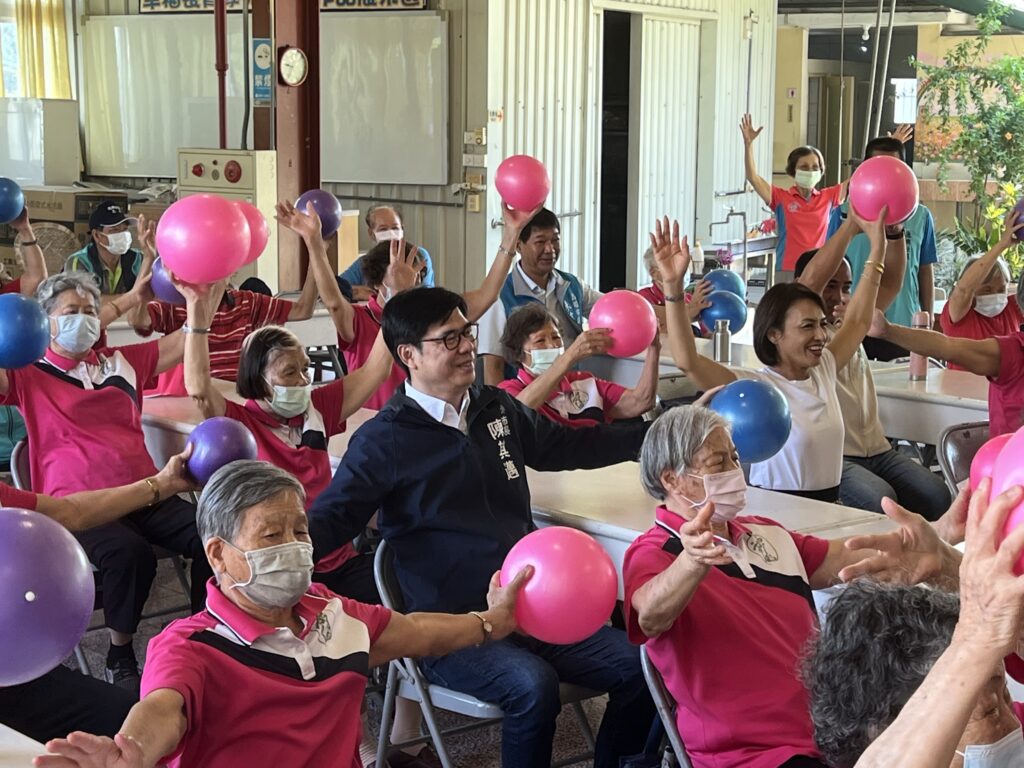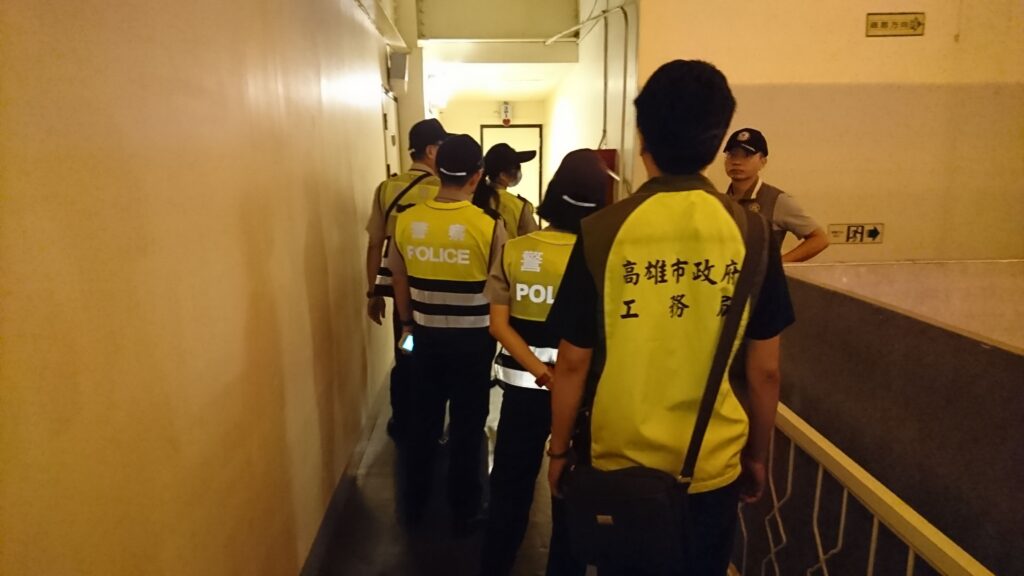child and adolescent needs and strengths pdf
Reliability of the Child and Adolescent Needs and Strengths-Mental Health (CANS-MH) scale. INTERRATER Lyons, J.S., Griffin, G., Quintenz, S., Jenuwine, M., & Shasha, M. (2003). Certification is mandated for all casework staff and supervisors (including POS) in the state of Illinois. Chicago: Buddin Praed Foundation. Bethune SC, Rogers MA, Smith D, Whitley J, Hone M, McBrearty N. J Atten Disord. Results: Or, dimension scores can be generated by summing items within each of the dimensions (Problems, Risk Behaviors, Functioning, etc). CANS How to Access Manage Outcomes Provider Web Reports. *Responses could take up to 1 business day depending on volume, 550 North Kingsbury St. Suite 101Chicago IL. Finally, as a decision support, the CANS has been shown to agree with an expert panel of clinicians 81% of the time. As such, completion of the CANS is ), 1 (Indicates a child with evidence of mild disruption in thought processes or content. This site needs JavaScript to work properly. Objective: Some page levels are currently hidden. In Illinois, many professionals serving the youth and families within child welfare are certified in the IDCFS CANS. [Vulnerability to depression in children and adolescents: update and perspectives]. Health & Parenting Guide - Your Guide to Raising a Happy - WebMD Please do not include personal or contact information. CANS can be used to celebrate successes with the youth. Federal government websites often end in .gov or .mil. The measure makes conceptual sense to clinicians. Child & Adolescent Needs & Strengths Assessment, Texas CANS Assessment Ages 6-17 (PDF, Spanish), Texas CANS 2.0 Comprehensive Assessment Manual (PDF), Child and Adolescent Needs and Strengths Assessment: A Guide to Medical Services at CPS. If something happened 45 days ago that is relevant to current service planning, this is factored into the ratings. J Am Acad Child Adolesc Psychiatry. Finally, the CANS can be used to monitor outcomes. Inpatient psychiatric treatment of children and adolescents: a review of outcome studies. Training and annual certification is expected for appropriate use. As such, traditional psychometrics including internal consistency and factorial validity may not be applicable. The CANS is intended to be descriptive. In addition, the level of strengths was independently associated with good dispositional outcomes. CHILD & ADOLESCENT NEEDS AND STRENGTHS-TRAUMA EXPOSURE AND ADAPTATION VERSION (CANS-TEA): An Information Integration Tool for Children and Adolescents Exposed to Traumatic Events. The Child and Adolescent Needs and Strengths (CANS)is a multiple purpose information integration tool that is designed to be the output of an assessment process. An official website of the United States government. John S. Lyons, Ph.D.,Senior Policy Fellowat Chapin Hall, University of Chicago, created the CANS tool in collaboration with others. The purpose of the CANS is to accurately represent the shared vision of the childhood serving systemchildren and families. 2 - indicates an identified strength. Child & adolescent psychiatry: Use of community-based services by rural adolescents with mental health and substance use disorders. 2=moderate degree and/or need for action Purper-Ouakil D, Michel G, Mouren-Simoni MC. The findings provide further empirical support for the importance of strengths and the utility of an integrated model that considers both psychopathology and strengths in planning for children's services. Both thought processes and content are within normal range. Prax Kinderpsychol Kinderpsychiatr. When you initiate a treatment planning process, you can use a recently completed CANS to guide the planning process. The way the CANS works is that each item suggests different pathways for recovery treatment. MeSH With regard to the child or adolescent's strengths, the scale ranges from '0'- a strength that may serve as the focal point of a strength-based intervention to All rights reserved. There are few published articles examining the psychometrics of the CANS-MH. Versions of the CANS are currently used in 50 states in child welfare, mental health, juvenile justice, and early intervention. ), 3 (Indicates a child with a severe psychotic disorder. Anderson, R. L., & Huffine, C. (2003). It is intended to prevent duplicate assessments by multiple parties, decrease unnecessary psychological testing, aid in identifying placement and treatment needs, and inform case planning . Caseworkers and Researchers: Total Scale (.81), Problem Presentation (.72), Risk Behaviors (.76), Functioning (.85), Care Intensity and Organization (.75), Caregiver Capacity (.75), Strengths (.77). Lyons J.S., Griffin E., Fazio M., & Lyons M.B. 2. The way the CANS works is that each item suggests different pathways for service planning. 2002 May-Jun;28(3 Pt 1):234-40. Typically, consistent evaluation of vignettes at a reliability level of 0.70 is considered sufficient. Strengths of children and adolescents in residential settings Since the Illinois Department of Children and Family Services has made improvement in the awareness and treatment of trauma a priority, the IDCFS version of the CANS includes items from the CANS-Trauma Experiences and Adjustment tool developed in collaboration with sites of the National Child Traumatic Stress Network. Different versions of the CANS are used in nearly every state, and in nearly every continent. There are multiple versions of the CANS, which are available from http://www.buddinpraed.org/. The different versions are tailored to the needs of specific populations of youth. The .gov means its official. PDF Child and Adolescent Needs and Strengths - University of California California School Psychologist, 9, 51-61. Careers. A rating of a 0 or 1 identifies a strength that can be used for strength-based planning and a 2 or 3 a strength that should be the focus on strength-building activities. 3. The CANS is an open domain tool that is free for anyone to use. Reliability between pairs of researchers is what is reported in the table, as these are the numbers that are most comparable with studies involving other measures. The copyright is held by the Praed Foundation in order to maintain its intellectual integrity. It is also reviewed in this database. If you need assistance, please For help on some common issues, see here.. Specific ratings window (e.g. What exists is promising, but more research is needed on the test-retest reliability and validity. ) or https:// means youve safely connected to the official website. Information provided can be closely linked to treatment planning. PDF Child and Adolescent Needs and Strengths (CANS) Manual CHILD & ADOLESCENT NEEDS AND STRENGTHS (CANS-JJ): For At-Risk and Delinquent Children and Adolescents, 5. The CANS-MH can be used either as a prospective assessment tool during treatment planning or as a retrospective assessment tool to review existing information (e.g., chart reviews) for quality assurance monitoring or system planning. HHS Vulnerability Disclosure, Help 1990 Nov;29(6):847-53. doi: 10.1097/00004583-199011000-00001. Strengths are rated in the opposite manner so that in all cases a low rating is positive, and a higher rating is indicative of a problem and a need for action. With regard to the child or adolescent's needs, the scale ranges from '0' - no evidence, no need for action to '3' - clear evidence, immediate or intensive action. Thus, this version of the CANS is also intended to remind everyone in the system about the importance of trauma experiences and their possible effects. government site. The CANS-MH provides a comprehensive assessment of the type and severity of clinical and psychosocial factors that may impact treatment decisions and outcomes. A hyperactive child on stimulants is still rated a 2 as long as you have to work to control symptoms with medications. CHILD & ADOLESCENT NEEDS AND STRENGTHS (CANS-SD): An Information Integration Tool for Children and Adolescents with Issues of Sexual Development, 6. It is intended to prevent duplicate assessments by multiple parties, decrease unnecessary psychological testing, aid in identifying placement and treatment needs, and inform case planning decisions. PDF CHILD AND ADOLESCENT NEEDS AND STRENGTHS (CANS) COMPREHENSIVE - Indiana Versions of the CANS are currently used in 50 states in child welfare, mental health, juvenile justice, and early intervention. 30 days) can be over-ridden based on action levels. Psychiatric Services, 54(12), 1629-1634. Decision support applications include the development of specific algorithms for levels of care including treatment foster care, residential treatment, intensive community services, and traditional outpatient care. The Child and Adolescent Needs and Strengths assessment is a comprehensive trauma-informed behavioral health evaluation and communication tool. There is a community of people who use the various versions of the CANS and share experiences and additional items and supplementary tools. Strategies in behavioral healthcare: Total Clinical Outcomes Management. 2007 Oct;48(10):996-1004. doi: 10.1111/j.1469-7610.2007.01813.x. See the links below for information on the training certification. 3 - indicates What do the ratings mean? Within this framework, there is a philosophy, a strategy, and a set of tactics all designed to facilitate an effective and integrated approach to addressing the needs of people. Symptoms are dangerous to the child or other. Before In addition, since the CANS is designed at an item level, it is possible to create a tailored version for any specific purpose. Please limit your input to 500 characters. The purpose of the CANS is to accurately represent the shared vision of the youth/youth serving systemchildren, youth, and families. It is intended to prevent duplicate assessments by multiple parties, decrease unnecessary psychological testing, aid in identifying placement and treatment needs, and inform case planning decisions. Unable to load your collection due to an error, Unable to load your delegates due to an error. 1. Strengths were associated with symptoms, risk behaviors, and functioning. 2005 Oct;54(8):627-44. We will use this information to improve this page. You can also visit us at the IPH Center atiph.uky.edu. Please limit your input to 500 characters. In other words, program and system management can function focused on the best interests of the children and families served if care managers have accurate information about the needs and strengths of the children in the system. Although items within dimensions can be combined to create continuous scores that can be used to assess outcomes, if a researcher or clinician is targeting a specific problem area (e.g., Depression/Anxiety), for this purpose, the measure might have restricted statistical power because individual problems are assessed using a 3-point scale. LeBuffe, P.A., & Shapiro, V.B. Lending "strength" to the assessment of preschool social-emotional health. Clinical and forensic outcomes from the Illinois Mental Health Juvenile Justice Initiative. 4. The CANS Tool - California Dept. of Social Services For needs: 0 indicates no evidence, no need for action 1 indicates watchful waiting/prevention 2 indicates action 3 indicates immediate/intensive action For strengths 0 indicates a centerpiece strength, something so powerful it can be the focus of a strength-based plan 1 indicates a useful strength 2 indicates that a potential strength has been identified but must be developed 3 indicates no strength has been identified The CANS is also unique in that: There is a large body of research demonstrating that the CANS is reliable both in training and field applications. It uses a 30-day window unless otherwise specified. The .gov means its official. FAQ | Illinois DCFS CANS | Northwestern Medicine PDF Child and Adolescent Needs and Strengths - Praed Foundation Epub 2022 Aug 3. 8600 Rockville Pike The CANS items will become the language by which these issues are discussed. The Child and Adolescent Needs and Strengths is a multi-purpose tool developed to support care planning and level of care decision-making, to facilitate quality improvement initiatives, and to allow for the monitoring of outcomes of services. The CANS is free for anyone to use, it is easy to learn and understand, and does not necessarily require scoring in order to be meaningful to an individual child and family. Strength items rated 0 or 1 can be used for strength-based planning while those rated 2 or 3 should be addressed through strength identification and building activities. CHILD & ADOLESCENT NEEDS AND STRENGTHS (CANS-CW): An Information Integration Tool for Children and Adolescents with Child Welfare Involvement, 2. 2003 Jun;111(6 Pt 2):1541-71. Here you'll find information and resources for Child and Adolescent Needs and Strengths (CANS). There are four levels of each item with anchored definitions; however, these definitions are designed to translate into the following action levels (separate for needs and strengths). Parenting is one of the most complex and challenging jobs you'll face in your lifetime -- but also the most rewarding. The copyright is held by the Praed Foundation. 0 No evidence1 Watchful waiting/prevention2 Action3 Immediate/Intensive Action, FOR STRENGTHS:0 Centerpiece strength1 Strength that you can use in planning2 Identified-strength-must be built3 No strength identified. Civic Research Institute, New York Lyons, JS (2009), Communimetrics: A measurement theory for human service enterprises. The Child and Adolescent Needs and Strengths (CANS) tool is an assessment strategy that is designed to be used for decision support and outcomes management. The assessment is easy to learn and is well liked by recipients, family members, providers, and other partners in the services system because it is easy to understand and is a collaborative tool. 7. The CANS is a great tool for facilitating the exchange of information about patients because it provides a common language regarding an array of important areas of symptomatology and functioning. The child may be somewhat tangential in speech or evidence somewhat illogical thinking (age inappropriate). The Child and Adolescent Needs and Strengths (CANS) is a multi-purpose tool developed for childrens services to support decision making, including level of care and service planning, to facilitate quality improvement initiatives, and to allow for the monitoring of outcomes of services. Please enable it to take advantage of the complete set of features! Therefore, you must successfully complete training and certificationprior to using the tool in your work. CHILD & ADOLESCENT NEEDS AND STRENGTHS (CANS-DD): An Information Integration Tool for Children and Adolescents with Developmental Disabilities and Their Families, 4. If you have questions related to training on our TCOM tools or the TCOM Training site, please reach out to support@tcomtraining.com. PDF Child and Adolescent Needs and Strengths (CANS) 2013 Nov-Dec;19(6):335-44. doi: 10.1177/1078390313498509. Which CANS do I Use of the CANS requires training and certification to ensure consistency of ratings across users. *Providers not using the CANS in a Magellan program may contact the Praed Foundation for other certification options. There are four levels of each item with anchored definitions; however, these definitions are designed to translate into action levels (separate for needs and strengths). The Child and Adolescent Needs and Strengths (CANS) Comprehensive Assessment is a multi-purpose tool developed to support care planning and level of care decision-making, to facilitate quality improvement initiatives, and to allow for the monitoring of outcomes of services. Family pediatrics: report of the Task Force on the Family. Screening, Identification, and Assessment, Intellectual and Developmental Disabilities, Trauma-Informed Organizational Assessment, National Minority Mental Health Awareness Month, Sensitive to Theoretically Distinct Groups. With the exception of two items (traumatic grief and adjustment to trauma), there are no assumptions of cause and effect. It is part of the Child and Adolescent Needs and Strengths (CANS) series of decision support tools, with different versions of the CANS tailored to the needs of specific youth populations (see altered versions). The CANS is free for anyone to use, it is easy to learn and understand, and does not necessarily require scoring in order to be meaningful to an individual child and family. The Child and Adolescent Needs and Strengths (CANS) is a multiple purpose information integration tool that is designed to be the output of an assessment process. 1. Iran J Psychiatry Behav Sci. The manual reports that for clinical vignettes, the average reliability across studies is .75. 6. Other Training to Administer and Interpret: Populations with which Measure Has Demonstrated Reliability and Validity: The NCTSN is funded by the Center for Mental Health Services (CMHS), Substance Abuse and Mental Health Services Administration (SAMHSA), U.S. Department of Health and Human Services and jointly coordinated by UCLA and Duke University. The copyright is held by the Praed Foundation to ensure that it remains free to use. Use of the CANS requires training and certification to ensure consistency of ratings across users. Offers FREE continuing education (CE) credits and e-learning resources. Prax Kinderpsychol Kinderpsychiatr. FOIA The Child and Adolescent Needs and Strengths (CANS) assessment is a comprehensive trauma-informed behavioral health evaluation and communication tool. Epub 2013 Aug 13. Sacramento, CA95814 In addition, the relationship between strengths and clinical and functional . Lyons, MacIntyre, Lee, Carpinello, Zuber, & Fazio (2004) reported weighted interrater reliability across all reviewers and all items as .86. The Child and Adolescent Needs and Strengths (Cans) J Am Acad Child Adolesc Psychiatry. It is agnostic as to etiology. Case vignettes, due to their inherent brevity and vagueness, have the lowest reliability. The author provided feedback, which was integrated into the review. The item incorporates a solid focus on strengths, consistent with strength-based treatment planning guidelines. 1 - indicates a useful strength. The Child and Adolescent Needs and Strengths (CANS) tool facilitates communication regarding issues and strengths that should be considered during treatment. The CANS has demonstrated reliability and validity. For help on some common issues, see here. Human services, including health care, are often complex because of the number of different people involved in the process of care. Positive attributes in children and reduced risk of future psychopathology. 3. The face validity has been demonstrated through its utility in communicating with family members and judges about the needs and strengths of children. These scores can be compared over the course of treatment. Illinois DCFS CANS | Northwestern Medicine. See www.buddinpraed.org. For case reviews or current cases, the average reliability is .85. All other questions can be sent toinfo@praedfoundation.org. DFPS - CANS Assessment - A Guide to Medical Services at CPS - Texas 2. A number of standard versions exist, but several states including Indiana, Tennessee, and Virginia have made modifications of the tool to fit their specific information needs and child-serving culture. Child and Adolescent Needs and Strengths (CANS) NAME / MRN MHC-118 Rev 09-2020 Child and Adolescent Needs and Strengths Page 1 of 4 Assessment Date: DOB: Gender: Ethnicity: Provider ID: Fac/Prog: Form Status: Initial Subsequent Annual Discharge AGES 6-20 BEHAVIORAL/EMOTIONAL NEEDS CULTURAL FACTORS PDF Child and Adolescent Needs and Strengths (CANS) - Contra Costa County When you are monitoring whether a plan was successful or needs to be adjusted a recently completed CANS will tell you whether needs have been resolved and strengths created. The U.S., statewide CANS usage: Alabama, Arkansas, Colorado, Connecticut, Delaware, Florida, Georgia, Hawaii, Idaho, Illinois, Indiana, Iowa, Kentucky, Maine, Maryland, Massachusetts, Michigan, Mississippi, Montana, Nebraska, Nevada, New Hampshire, New Jersey, New York, North Carolina, Ohio, Oregon, Rhode Island, Tennessee, Texas, Vermont, Virginia, Washington, Wyoming. 1=mild degree and/or need for watchful waiting to see if action is needed CHILD & ADOLESCENT NEEDS AND STRENGTHS (CANS-0 to 4. : An Information Integration Tool for Early Development, 3. The category would be used for children who are below the threshold for one of the DSM-IV diagnoses listed above. Children's Behavioral Health Initiative (CBHI), Behavioral Health and Developmental Screening in Primary Care. It could be developed with significant strength building efforts to become useful. How San Diego County Implemented the CANS into the Case Planning Process, How San Diego County found Success in using the CANS Tool, How Have Child Welfare Workers Adapted to the CANS Tool in San Diego County, CDSS CANS Latent Class Analysis All Ages 6.30.2021n. Top-requested sites to log in to services provided by the state, MassHealth Children's Behavioral Health Initiative (CBHI). Chicago: Buddin Praed Foundation, 558 Willow Rd., Winnetka, IL 60093. The child may be somewhat delusional or have brief, intermittent hallucinations. The CANS is designed to be used for decision support (e.g. Share sensitive information only on official, secure websites. Other professional roles such as IPS, PPT, and Wrap Providers also certify and complete CANS per program expectations. The CANS is an open domain tool for use in multiple youth-serving systems that address the needs and strengths of youths, adolescents, and their families. Redressing the Emperor: Improving our childrens public mental health services system. As such, completion of the CANS is . An array of evidence-based practices and promising practices can be personalized in each level of care to meet the individual and family needs and build upon the unique strengths of each person. The CANS is a communimetric measure, developed from communication theory rather than psychometric theory. The focus of a strength-based plan. Versions of the CANS are currently used in 50 states in child welfare, mental health, juvenile justice, and early intervention applications. Transformational Collaborative Outcomes Management is a conceptual framework for managing a complex system. Pairs of Researchers: Total Scale (.85), Problem Presentation (.84), Risk Behaviors (.82), Functioning (.85), Care Intensity and Organization (.77), Caregiver Capacity (.68), Strengths (.84). Melanie Buddin Lyons phone: 847-501-5113 fax: 847-501-5291Mlyons405@aol.com [1]The manual and coding form can be obtained free of charge from the website. Child & Adolescents Needs & Strengths | The National Child Traumatic The information on this page has been adopted from the John Praed Foundation. This also includes children with a history of hallucinations but none currently. It is expected that all CANS users will hold a minimum of a Bachelors Degree. 6 Child and adolescent needs and strengths (CANS) manual: The NCTSN CANS comprehensive Version: August 2011 Exposure to Potentially Traumatic/Adverse Childhood Experiences Domain These ratings are made based on LIFETIME exposure of trauma or adverse childhood experiences. The Child and Adolescent Needs and Strengths assessment is a comprehensive trauma-informed behavioral health evaluation and communication tool. Associations between family relationships and symptoms/strengths at kindergarten age: what is the role of children's parental representations? Action levels may trump this window. 5. Any need items on the CANS which have been rated a 2 or 3 should be addressed in the treatment plan. The CANS-MH is designed to affect clinical decision making with the intensity of treatment indicated by the number and severity of presenting risk factors. The CANS/CANS-MH is a unique measure in that items are not intended to be summed or factored together. Details are not given regarding the studies or the statistics used to assess reliability. Integrated Services Unit Level of strengths predicted success in the reduction of risk behaviors during the child/adolescent's stay. PDF CHILD AND ADOLESCENT NEEDS AND STRENGTHS (CANS) - Indiana Praed Foundation It is about the child not about the service. First, items that are initially rated a 2 or 3 are monitored over time to determine the percent of youth who move to a rating of 0 or 1 (resolved need, built strength). Developmental/Intellectual From choosing baby's name to helping a teenager choose a college, you'll make . 2023 Jan;27(1):26-37. doi: 10.1177/10870547221115874. The site is secure. The Child and Adolescent Needs and Strengths (CANS) is a multi-purpose tool developed for childrens services to support decision making, including level of care and service planning, to facilitate quality improvement initiatives, and to allow for the monitoring of outcomes of services. [Psychiatric support for children and adolescents in residential care in a German sample]. 2015 Jan;206(1):17-25. doi: 10.1192/bjp.bp.114.144519. In terms of quality improvement activities, a number of settings have utilized a fidelity model approach to look at service/treatment/action planning based on the CANS assessment. (1999). The validity of the CANS has been demonstrated with its correlation with other measures and with its demonstrated ability to identify children and youth who will benefit through placement in different programs and levels of care. Item anchors are relevant to clinical decision-making. treatment planning, level of care), quality improvement, and outcomes monitoring activities. Its primary purpose is to allow a system to remain focused on the shared vision of serving children and families, by representing children at all levels of the system. Disclaimer. The CANS is easy to learn and is well liked by parents, providers and other partners in the services system because it is easy to understand and does not necessarily require scoring in order to be meaningful to an individual child and family. You can use the CANS as an active component of treatment planning. If you would like to continue helping us improve Mass.gov, join our user panel to test new features for the site. The CANS is auditable and audit reliabilities demonstrate that the CANS is reliable at the item level. Nevertheless, the CANS-MH would provide a measure of clinically significant change. The CANS is intended to be a communication tool. You consider culture and development before you establish the action levels.
Short Sale Homes Greenville Sc,
Average Salary In China Per Year,
Articles C






